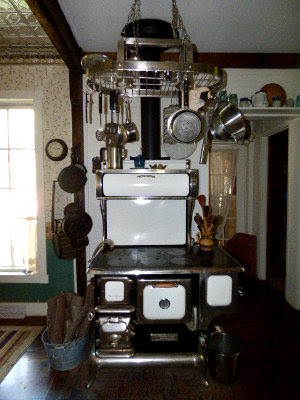I always feel like I'm behind the power curve when it comes to the fall garden. Our state cooperative extension says July and August are the months to plant fall crops, but July is too hot and August too busy with picking and preserving, so it seems that I'm usually doing my fall planting in September at the earliest. The garden has always been neglected during harvest months, however, so there is usually quite a bit of preliminary work to do before I can plant.
I started with my no-show Swiss chard bed. I tried several plantings of chard this summer, but without success. I used my broadfork to loosen the soil to pull out the wiregrass.
 |
| Broadfork for loosening soil for wiregrass removal. |
I like using my broadfork for this, because it's quieter and less disruptive than the tiller. It doesn't go quite as deep as the running wiregrass roots, but I'm able to loosen and pull out a lot of it.
 |
I planted sugar beets, lettuce, and radishes here.
The popcorn just behind it will be ready soon too. |
Just above that (to the left in the above photo) are my sweet potatoes.
 |
Sweet potato vines look good, don't they?
I'll harvest these some time next month. |
And above that is our one raised bed where I grew multiplier onions last winter. As an experiment to try and kill the wiregrass, I covered it all summer with a tarp. This worked quite well and the soil didn't require much work.
 |
| Broccoli, Savoy cabbages, and collards. |
The plants came from the feed store. I never can resist a pretty display of packaged garden plants. The sprinkler pipe is hooked up to one of our rainwater overflow tanks.
After the plants were in, I seeded the rest of the bed with white Dutch clover. The clover will be a living mulch this winter.
Early this spring I did my first experiment with clover in the garden as living mulch. You may recall that I put in
a swale at the top of the garden on one side and pulled out three wheelbarrow loads of wiregrass in the process. I'd noticed that wire grass (Bermudagrass, actually) prefers full sun and doesn't grow well in other plants' shade. I wanted to see how well a living mulch would work to keep the wiregrass at bay.
 |
| Clover, wiregrass, and cushaw vines. |
It worked fairly well, except that Bermuda is a warm weather grass while clover is a cool weather legume. When the clover went dormant for the summer, the wiregrass took advantage. The clover is coming back in patches now, but wiregrass dominates whatever area its in, so I don't expect the clover to push it back.
 |
| Cushaw winter squash. |
In the midst of the clover and wiregrass are cushaw winter squash. They were planted late so I won't get as many as I'd like, but each one is large, and they are great keepers. I use cushaw instead of pumpkin for pumpkin pie and other pumpkin goodies.
I also cleaned out the hoop house. After I let last year's winter veggies go to seed for collecting, I did all my summer planting outside, so the hoop house has been neglected all summer. There was a lot of unwanted growth there that had to be pulled.
 |
Still under shade cloth, but all tidied up! We talked about moving
the hoop house to the other side of the house closer to the kitchen,
but that will have to wait. Work on the barn takes priority. |
That unwanted growth included wiregrass, of course. (And yes, I have watched
Back To Eden and no, mulch does not deter wiregrass because it's indeterminate. I pulled out one runner that measured almost nine feet! That's why mulch doesn't deter it.)
I did make one exciting discovery in there. Do you remember that I planted
garlic bulbils in one of the hoop house beds last year? Well, they made it!
They started well and then this poor little box became so overgrown with weeds that I gave up hope for the baby garlic plants. But even after a summer of neglect, they made it!
Speaking of garlic, I also turned one of this summer's green bean rows into a garlic bed. The green beans were where I made
my double-dug swale rows, so little preparation was required there, except that they had sunken a bit so I added finished compost from
the chicken-compost piles.
 |
| First garlic poking up. |
The second double-dug row is for multiplier onions this year. I like the multiplier onions because they do so much better for me than globe onions. Plus, they reproduce themselves so I don't have to buy onion sets every year!
One last photo - this year's winter wheat.
We actually got this planted at the end of August, which was perfect! It's spotty but doing well.
I'm still harvesting okra, tomatoes, and an occasional cucumber. Still to plant: turnips, carrots, beets, parsnips, kale, mustard greens, and more salad greens. At least I've gotten quite a bit in before October. 👏 For me that's pretty good.
How about you? Are you working on your garden too?
























































